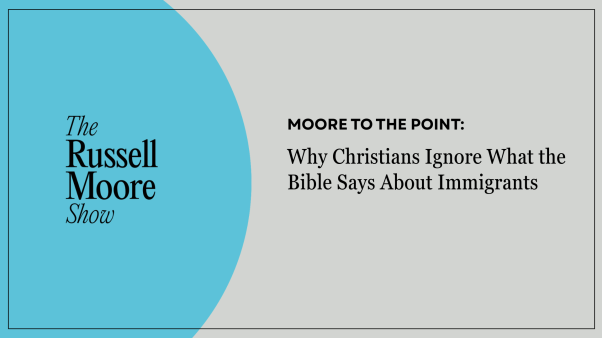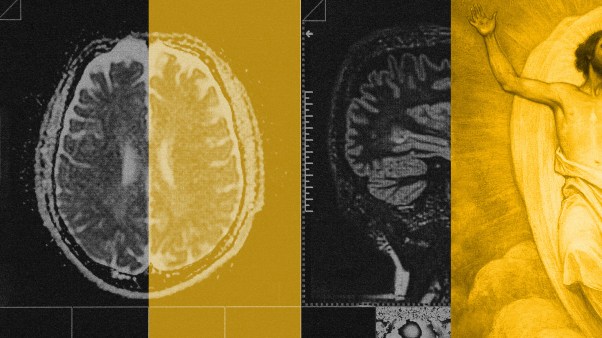It is part of the wonder surrounding my interest in the Bible that, on the 500th anniversary of the completion of the Gutenberg Bible, I should have rediscovered (pinpointed it for scholars is perhaps more exact) a copy which virtually nobody knew was missing.
The last of five twentieth-century censuses of this famed Bible listed 46 copies known to have survived—32 in Europe and 14 in the United States. Two copies, when exhibited outside their regular habitat in recent years, were insured for $500,000 each. So high is the value placed on the first Bible, and believed by many to be the first book, printed from movable type in the Western world.
A year ago, in writing on the Gutenberg Bible for a national magazine, I closed the piece with an unconscious prophecy: “Someday, somewhere in the world, there may be another discovery like the one in the peasant’s home in Olewig; or there may be another library like Sir George Shuckburgh’s. And in our land of free enterprise no one can stop us from dreaming that one of us may locate the next copy of the most expensive book in the world.” (The reference to Olewig and Shuckburgh is to the last two copies of the Gutenberg Bible rediscovered.)
Despite these words, when I started planning late in 1955 a pilgrimage to all the libraries in the world containing original Gutenberg Bibles, I never dreamed that my journey would be instrumental in pinpointing for scholars Copy Number Forty-seven of this almost priceless Bible.
Time For A Census
My plan was to examine and photograph each copy, gather bibliographical and human interest material about each, and publish a 500th Anniversary Illustrated Census of the Gutenberg Bible. Nothing like it had ever been done before (I did not propose to plow the ground so ably furrowed by scholars like Seymour de Ricci, Paul Schwenke, and others), and 1956 was the time for making this census. According to a handwritten note by Vicar Henry Cremer of the Collegiate Church of St. Stephen in Mainz, Germany, he completed rubricating Volume II of the Gutenberg Bible, now in the Bibliotheque Nationale in Paris, on August 15, 1456 (Volume I was finished nine days later).
It was important, it seemed to me, that someone should make a “hand count” of all the Gutenberg Bibles in the world. In no other way could their locations be exactly established. As a matter of record I found three changes, not previously listed. The Berlin copy is now in the library at the University of Tubingen, Germany. The Pelplin, Poland, copy is at the Museum of the Province in Quebec, Canada. And another of the three Leipzig, Germany, copies (one had been previously reported) is not in its former place. Most of these Bibles were removed at the time of World War II for safekeeping.
On August 15, 1956 (exactly 500 years after the earliest authenticated date connected with the Gutenberg Bible), I sat with Dr. Aloys Ruppel, director of the Gutenberg Museum and vice president of the Gutenberg Gesellschaft, in the library of his home in Mainz, Germany, the city where the famed Bible was printed.
Neglected Copy In Mons
I had already been in Europe 25 days at that time, and was able to bring him greetings from his many friends among the librarians. This genial Gutenberg scholar turned to me suddenly, in the course of our two-hour visit together, and asked if I knew of the Gutenberg Bible at Mons, Belgium. I told him I had heard of a Belgian copy from a friend in Geneva, but had thought it might be only the Leipzig copies on loan, until I had learned in Leipzig that this was not the case.
Then unfolded the story of how the librarian at Mons, Dr. M. A. Arnould, had stopped off at Mainz on a trip to Munich and had showed the Gutenberg Museum staff some photographs of the Mons copy, convincing as to its genuineness. Naturally excited, I told Dr. Ruppel that scheduled visits to German libraries would delay my seeing the Mons Bible a week, but I would eagerly work toward that day.
So at 11:30 on the morning of August 22 a member of Bourgmestre Fernand Demarbre’s cabinet guided me up the narrow cobblestone streets of Mons to the Bibliotheque Publique on Rue Marguerite Bervoets, where Dr. Arnould greeted me. We had time only to introduce the subject of my visit before lunch, which took place in one of the city’s few recently constructed buildings. The food was excellent, the atmosphere peaceful—unlike many a warlike scene Mons had witnessed in its 1300-year history. Here the British first met in World War I. The Germans occupied the city in World War II. Early, the bloody religious repression of the Duke of Alba, the wars of Louis XIV and Louis XV, had all left deep scars on the city of Mons. But after each she has made a valiant recovery, with the result that today Mons takes pride in having preserved a large part of her rich heritage from the past. As capital of the province of Hainaut, the city is known afar as a cultural center, to which its several outstanding museums bear eloquent testimony.
After lunch we crossed the cobblestone passage between Dr. Arnould’s office and the exhibit hall. He took a huge key and unlocked the great door to a room filled with treasures; the library is rich in rare tomes. The Gutenberg Bible, Volume I only, was in a glass-covered case. Dr. Arnould opened it and placed the Bible on a table before me.
On examination I saw that the Mons copy was quite incomplete. It contained, as he told me, only 220 of the 324 leaves in Volume I. It was bound in a brownish leather the library identifies as nineteenth-century. Excessive humidity had taken its toll of the Bible’s lower margins, some of them being almost completely eaten away near the spine. As I leafed through the volume, page by page, I found the first of big missing sections—twenty leaves between Genesis 16 (folio 10 verso) and Exodus 6 (folio 31 recto). The next was from the end of the Book of Ruth (folio 128 verso) to 2 Kings 5 (folio 149 recto). The third, from the last page of IV Esdras (folio 260 recto) to the end of the volume (folio 324 verso), comprised 64 leaves. These accounted for the 104 missing leaves.
First American Interest
Back in his office, Dr. Arnould gave me some clues as to the reason for this copy’s having escaped general notice so long. It had been willed to the city, along with his other valuables, by Canon Edmond Puissant at his death in 1934. Until recent years, it had remained in the Puissant Museum, with his other books and works of art. Dr. Arnould, after becoming librarian in 1950, wrote about the Bible in papers of local interest. It received wider publicity in November, 1955, when it was exhibited in Brussels by the Belgian Bible Society. Several newspapers wrote about it as “the only example of the Gutenberg Bible in Belgium,” but for some reason these accounts seem never to have crossed the Belgian frontier. In January, 1956, another article by the Mons librarian appeared in the German monthly, Deutches Pfarrerblatt. To my knowledge, however, only one German scholar wrote for further information. And Dr. Arnould said I was the first American with a scholarly interest in the Bible to view the Mons Gutenberg.
This was the highlight, of course, of a journey which carried me 16,500 miles through twenty-nine cities in twelve European countries this summer. Before the year is ended, another 9,000 miles will be added as I visit the American libraries.
Irony Of Our Times
It is part of the irony of the twentieth century that we should have to “rediscover” a Gutenberg Bible only five centuries after its appearance. It reflects the great change which has taken place in our outlook—from faith to secularism. Printing’s first great end-product was the Bible. No more would it be necessary tediously to make copies by hand. The common man would be able to possess his own copy of the Word. But a free press before long became preoccupied with other end-products—and, in many cases, the Bible was forgotten.
The Mons copy of the Gutenberg Bible remains a symbol of every neglected Bible with which bookshelves in the West are heavily populated.
Don Cleveland Norman, Th.B., is religion editor of The American People’s Encyclopedia, managing editor of The New Analytical Bible, and former executive secretary of the Chicago Bible Society.










